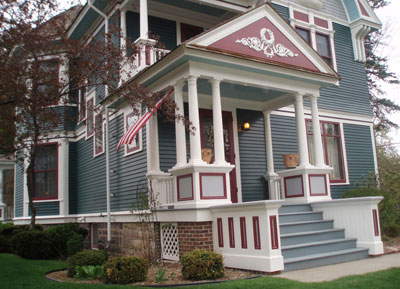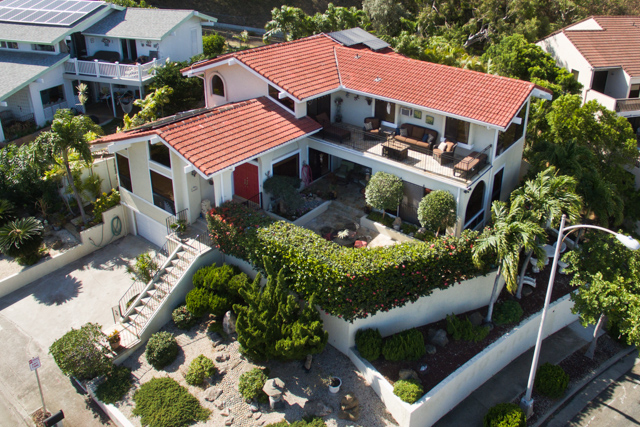
- The word “deck,” in this context, is generalized from decks on a ship.
- The word “deck” originates from the Middle Low German word verdeck, meaning “covering.”
- The first commercial boardwalk in the United States, which is considered a deck, was built in Atlantic City, New Jersey.

- Porches are often used as ante-rooms where muddy or wet clothes can be shed before entering the house.
- The word “porch” originates from the Latin word porta, which means “gate” or “entrance.”
- While many houses in the southern United States, as well as Victorian-style houses, have large porches suitable for social gatherings, most modern porches are too small for comfortable social use, and merely add to the visual appeal of the building.
- Porches are typically integrated with the house’s architecture by using similar design elements.

- In William Shakespeare’s Romeo and Juliet, Juliet famously courted Romeo from her balcony. The small balcony design typically associated with that scene is often referred to as a “Juliet balcony.”
- Balconies can be large enough to resemble decks, but they do not provide access to the ground.
- “Balcony” originates from the Italian word balcone.
- Balconies can be made from wood, iron, stone, and many other masonry materials.

A veranda is a long, roofed, open gallery built around a central structure and supported by pillars. Verandahs are often long enough to extend around the front and the sides of a structure. Their origins are uncertain, but they are known to be a hybrid of East Indian and European styles. The purpose of the verandah is social, although in a more relaxing, everyday sense than is the case of a deck or patio.
- “Verandah” is alternately spelled “veranda.”
- Verandah appears in Hindi and several other native Indian languages, although it appears to be an adaptation of the Portuguese and Spanish baranda.
- Australia and New Zealand have their own unique style of verandah. Some verandahs in these countries are roof-like structures that surround commercial buildings, often on every floor. Their purpose is to provide protection from the sun.

Patio Facts:
- “Patio” originates from the latin word patere, meaning “to lie open.”
- “Patio” is Spanish for “backyard” or “back garden.”
- In Australia, a patio often refers to any kind of outdoor verandah or balcony.
Signature Inspections Hawaii, LLC, is FULLY Insured & “NATIONALLY CERTIFIED” by InterNACHI. InterNACHI also requires inspectors to continue their education through accredited courses, conferences, online learning, etc… and annual Inspector Certificate Testing in order to hold a current certificate.
Contact Us Today || Book You Inspection Now
808.388.3425
Trevor Drinen | CPI Certified Professional Inspector # NACHI16122702
*For a more detailed explanation of the inspection process please feel free to visit: InterNACHI Residential Standards Of Practice and InterNACHI Code Of Ethics .









